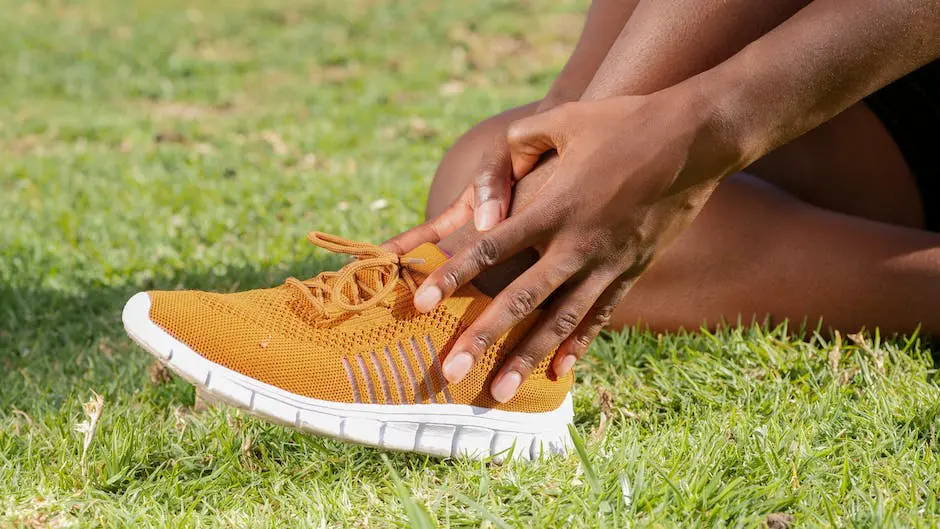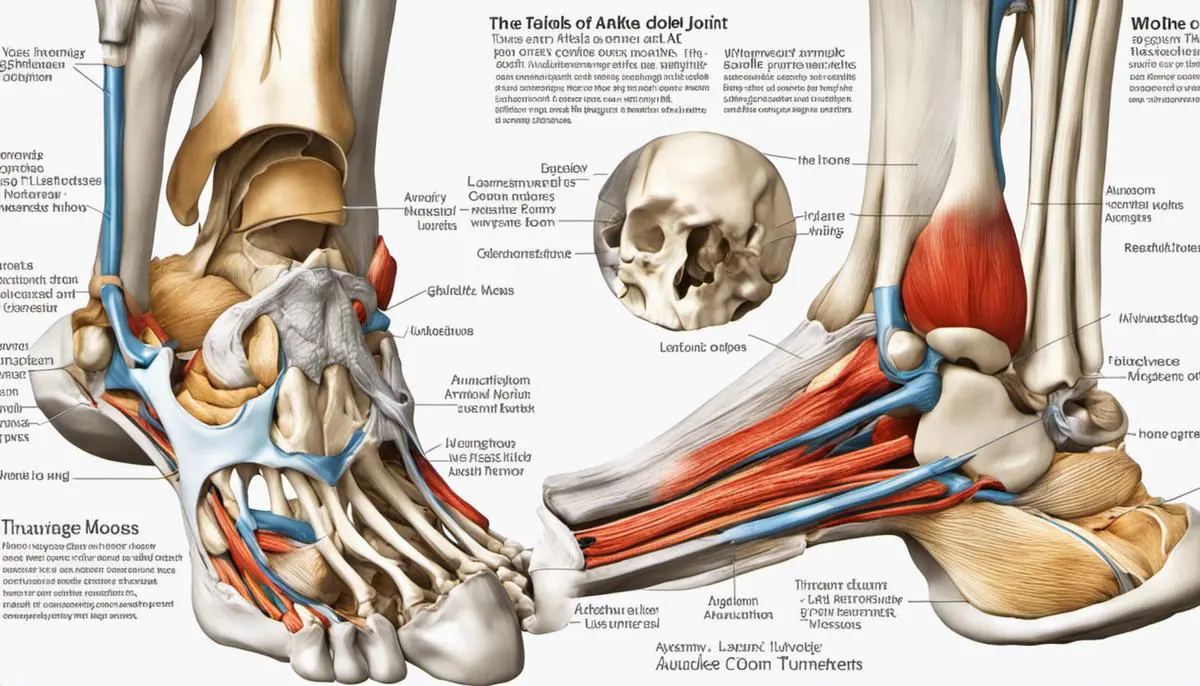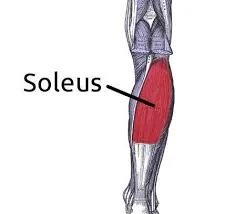Effective Ankle Strengthening Exercises
Regardless of whether you are a seasoned athlete or just starting your fitness journey, maintaining strong ankles is critical to your overall fitness and general well-being. Understanding the anatomy of your ankles is an integral part of ensuring you’re strengthening these areas effectively and efficiently.
This piece delves into the nuts and bolts of your ankle anatomy, providing a comprehensive overview of the muscles, ligaments, and bones making up this vital joint. We will also provide a guide to several effective ankle-strengthening exercises, ranging from heel raises to inversion and eversion activities. In addition, incorporating these ankle-strengthening exercises into your workout will be a central theme, aiming to integrate ankle fitness into a holistic, balanced lifestyle.
Table of Contents
Understanding Ankle Anatomy
It’s astounding– the sheer architecture of the ankle joint.
It’s an intricate interplay of bones, ligaments, and muscles, each designed for the dual roles of supporting any climber on those rocky inclines, or helping avid hikers go the extra mile.
The ankle serves as the critical fulcrum of our lower extremities, keeping us on our feet (literally!), facilitating movement, and linking us to our favorite outdoor pursuits.
This well-choreographed symphony of parts, each with its unique role, unequivocally benefits from targeted strengthening exercises.
So what key components of this wonderful joint really benefit from strengthening exercises? Buckle up and let’s delve right in!
Hobbyists, meet the three major bones, our first key players in this remarkable union.
The tibia (shinbone), fibula (smaller bone beside the tibia), and talus (bone in the foot) orchestrate superb weight transfer and mobility.
Each is a star player, but here’s the clincher: strengthening exercises targeting these bones can bolster their density and adaptive capabilities, thereby making them even more resistant to undue stress.
Next up in this delicate ensemble is a robust system of roughly 20 different ligaments, offering stability, ensuring an appropriate range of movement, and fending off potential sprains.
This intricate mesh needs its fair share of flexible strength too! Regular ankle-strengthening workouts help boost the ligaments’ elasticity and resilience, fortifying this key component against the risks of sprains and ligament tears.
Now, let’s shine the spotlight on the impressive cast of muscles and tendons.
The gastrocnemius, soleus, anterior tibialis, and others illuminate this stage with their dynamic performance, coordinating flexion, extension, inversion, and eversion.
These workers often bear the brunt of the impact during activities like biking, running, or mountaineering.
Strengthening these uniquely adapted muscles and tendons promotes optimal balance, foot control, and effective shock absorption.
It is indeed a masterpiece of physiological engineering!
And like every well-rehearsed orchestra, the ankle joint also relies on your nervous system for flawless execution.
Sensory receptors known as Proprioceptors – found in the muscles, tendons, and ligaments – help your body react dynamically to different terrain conditions by constantly communicating with the brain about your body’s position and movement.
Exercises that challenge strength, balance, and flexibility can hone the proficiency of these small but mighty stars of our balance and agility.
Hence, indeed, an unwavering practice of strengthening exercises can tune up each key component of the ankle joint– from the sturdy bones to the flexible ligaments, the functional muscle-tendons, and the integrating nervous system.
In doing so, not only can the ankle get a jump-start on improved mobility and enhanced performance, but it can also shield itself against any potential adversity in the journey of your cherished hobbies.
Best foot forward!

Ankle Strengthening Techniques
Unleashing the Power of Ankle Strengthening Exercises
Dive into the realm of ankle strengthening exercises, an absolute game changer for enhancing joint health, augmenting energy during dynamic activities, and paving the way for optimum athletic performance. Quite a revolution, isn’t it?
So, you’ve understood the ebbs and flows of the ankle joint anatomy, the crucial role it plays in weight transfer, mobility, and stability, as well as the importance of strengthening exercises for bones, ligaments, and engaging muscles. It’s also clear how proprioceptors contribute to this fascinating world of balance, stability, and mobility. With that in mind, let’s talk about the best exercises to strengthen those ankles.
Heel and Toe Walks: A true marvel for your posterior and anterior calf muscles! Lift the front part of your foot off the ground and walk on your heels for 2-3 minutes once or twice a day. For toe walks, elevate your heel and walk on your tippy toes for the same duration. A simple yet powerful strategy to pack a strength punch to your ankles!
Calf Raises An ideal companion to target those calf muscles and, as a side benefit, it’s also a great booster for your ankle strength. Stand tall, slowly rise onto your toes, and enjoy the stretch in your calves. Then, gently lower your heels back to the ground. Commit to this exercise 10-15 times once or twice a day for ultimate results.
Ankle Circles: Time to awaken your dorsiflexors and plantar flexors! While seated or standing, raise your foot off the ground and slowly form circles with it. Switch between clockwise and counterclockwise circles for a comprehensive flexibility and strength upgrade. The goal here is quality motion, not speed – slow and steady wins the race!
Resistance Band Drills: One of the finest ways to warm up your ankle muscles before any high-impact activities like running or jumping. Hook a resistance band around your foot while keeping the other end anchored to a static object. Now, flex and point your toes against its resistance. This exercise hits those calf muscles hard and, in turn, enhances ankle resilience.
Single-Leg Balance: An undersung hero that not only strengthens your ankles but also improves balance, stability, and proprioception. Stand on one leg for 30 seconds to a minute. To level up, close your eyes or stand on an unstable surface like a Bosu ball or a balance cushion.
There’s no denying that these exercises when performed regularly, can contribute significantly to enhancing ankle strength and stability. A noteworthy advantage is that they require no extensive equipment, very little time, and can be easily incorporated into daily routines and workouts.
Remember, when it comes to bezel-tightening exercises, consistency is key. And as the adage goes – An ounce of prevention is worth more than a pound of cure. So, let’s initiate these strengthening rituals, and heel-and-toe our way towards healthier ankles and better performance!
Incorporating Ankle Exercises Into Your Routine
As you embark on the journey to master ankle-strengthening exercises, make the most out of the warm-up routine by incorporating resistance band drills for optimal readiness. These routines stimulate the calf muscles and prepare the ankle for subsequent high-impact activities. Resistance bands essentially provide sustainable tension, ensuring that the muscles and ligaments around the ankle do not strain during the course of the exercise. Simply secure the band around your foot and gently pull back, stretching and activating the muscle tissues.
Heel and toe walks are valuable calisthenics worth exploring. They are easy to perform and have bountiful impacts on both calf muscles and the ankles. Regularly performing these walks strengthens these regions substantially, enhancing balance and shock absorption during intense workouts or physically demanding activities.
Ankle circles, on the other hand, are a potent tool for enhancing flexibility and joint strength. By rotating the feet in a clockwise or counter-clockwise direction, the exercise contracts and relaxes the muscles surrounding the ankle joint, giving them excellent toning and strength. A few minutes of ankle circles each day can go a long way in upping the strength of the ankles and ensuring their overall flexibility.
Calf raises are another great workout for your usual workout routine. By regularly performing calf raises, the calves and ankles find the sustained pressure they need to build strength and adaptability. Even more captivating is the fact that calf raises are workout-friendly and one can squeeze them anywhere within the workout routine, from the warm-up phase to the cool-off stage.
A single-leg balance is an invaluable exercise that shouldn’t escape your list of ankle-strengthening routines. This exercise improves the ankle’s strength, stability, and balance by focusing on one ankle at a time. It’s a fun, interesting, and challenging way to enhance your proprioceptor function and, as a result, optimize your balance and mobility.
Being consistent in ankle-strengthening exercises is paramount to profiting from their muscle-building capacity. Regular exercises condition the ankle toward maintaining balance, adapting to stress, and bouncing back from potential injuries. It’s the consistency in exercising that yields strength, renews flexibility, and mitigates instability.
Finally, the good news is that these ankle-strengthening exercises are easily accessible and can be smoothly incorporated into daily workout routines without disrupting the pattern. They may seem to be secondary to the core workout activities but remember, even the robust torso is helpless without a stable base. The path to stability starts from the ground up; a strong ankle foundation paves the way. Let’s step into a greater experience of physical fitness, starting with stronger ankles. Happy exercising!

Indeed, a well-rounded exercise routine that integrates targeted workouts aimed at bolstering your ankle strength can have a profound impact on your overall fitness and help prevent the recurrence of ankle injuries. It’s essential to adopt proper techniques when executing these exercises, as incorrect form can lead to unnecessary strain and possibly injuries. As you enhance your understanding of the ankle’s intricate anatomy and incorporate the highlighted exercises into your regimen, you will be paving the way for a more fulfilling, injury-free fitness journey. Remember, your body functions as a cohesive unit, and your ankles play a central role in providing the foundation required for optimal performance. With the knowledge and tools provided in this guide, you can make strides towards stronger and more resilient ankles, paving the way for an improved quality of life.







